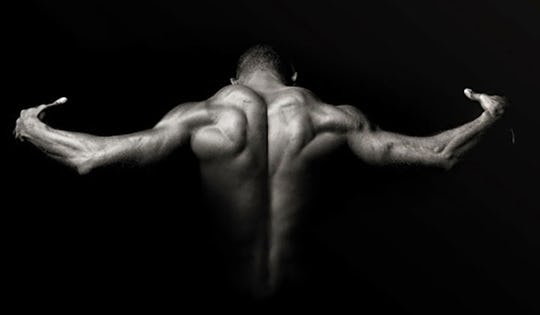Growing strong, mobile, able shoulders can be tricky at times when old or new injuries hinder our progress and aches and pains get in the way of creating bulletproof shoulders, that any member of the ape family would be proud to own. Here are a few practices I use for myself and students that I have gathered here and there.
![Onnit Suspension Trainer]() #1: Hanging to Avoid Back Pain
#1: Hanging to Avoid Back Pain
Structurally, we are made to grab something (a bar, rings, limb, rock ledge) overhead and dangle from it aka hang. Yet we neglect this pattern probably more than any other except maybe the squat. In June of this year, I flew to Ireland to attend a Movement X workshop with Ido Portal. I highly recommend attending if you can. He shared a great bit about gleno-humeral synchronization and scapular complexity. He spoke about how hanging was beneficial; I had been into hanging prior to the workshop but increased my hanging volume afterwards and got my students really going on it.
Some of the long time tweaks and twinges especially in my left shoulder went away. Also my shoulders got bigger and stronger. Beyond shoulder health, the wrists, elbows, and spine all benefit immensely. Strengthening each joint in this chain is part of bulletproofing the upper limbs.
When the connective tissue and joints become stronger they can handle more load and your muscles will grow. Developing proper connective tissue strength is the opposite approach most take; which is focusing on their muscles before preparing the joints to withstand the external demands. Furthermore, hanging is the foundation to pretty much every climbing or upper body pulling technique out there. Ladies you want to do a pull up? Hang first. Guys, a muscle up? Hang. Ladies, a slick ring routine? It all starts with hanging. My shoulders have grown to fill out my frame, ugh where was this body in high school? Pain free and I owe it to hanging first and foremost because it set the wheels in motion for so many other skills and practices. Once you build a hanging base you can brachiate, which is traveling while hanging, like monkey bars.
Types of Hangs:
Passive– shoulders are relaxed and up by the ears. Scapula is elevated.
Active– shoulders are engaged and down. Scapula is depressed.
Swinging– side to side, front to back.
Active arching hang (credit Ido Portal)– scapulas are retracted and rib cage points toward sky as you tilt/bend back.
#2: Weighted Shoulder Dislocates to Avoid Back Pain
Shoulder dislocates have been around as long as I can recall. You’ve seen that guy in his 60s in the corner of the gym with a broomstick taking it over his head to his butt and back again. When I was in my early 20s and stupider, I used to scoff at “that guy” for not smashing the weights. I should have gleaned wisdom from this sage of the broomstick.
I started shoulder dislocates about 2 years ago, infrequent at first, mainly because I sucked so badly at them. I had to use a rubber band, which is what I recommend for those with very tight shoulders or preexisting injuries. Eventually I moved to a bit of PVC pipe. The nugget is you want a smooth glide with no hitches throughout the movement. You will place your hands as far apart as is necessary to achieve this. Overtime they will get closer and closer. Once they are just a little more than shoulder width apart you can move to weighted dislocates. I got this from Coach Christopher Sommer, of Gymnastics Bodies.
This is actually a move we do in our warm up. I am currently at only a five pound plate and have been for a little over two months. My mobility and strength have increased. Also for the first time in my life I have stretch marks from rapid shoulder; growth my chest freckles at the pectoral tie in to the anterior deltoid have become wee bitty tiger stripes. Although it has taken me over two years to get to this point of using weighted dislocates once I got there it seemed to be just perfect for where I am supposed to be. Remember, start where you are supposed to be, smooth glide front to back, if that means the band, or a regular pole, or a 20 lbs dislocate, that is fine. It is all about the process. This is a phenomenal tool, do it often. I would suggest bouts of 3 rounds x 10-15 reps with about a 60 seconds rest in between and anywhere from 3-5 days a week in some cases daily. Your shoulders will thank you.
#3: Straight Arm Work to Avoid Back Pain
This one is pretty straight forward (yep, that pun was intentional), exercises like L-sits, protracted push-ups (keep arms straight in a hi-plank position retract shoulder blades, and protract shoulder blades), etc. Sometimes making gains in the shoulders without pain is as simple as finding a body position that is comfortable and holding.
You would be amazed the results a little isometric work will produce.The L-sit and tuck planche (if there is no impingement issues) are great examples of this. Try holding either for 3-5 rounds of 10-30 seconds. Another one is the handstand. Now I was going to make this a separate bullet point but it is straight arm work, in fact everything I have listed in this article is straight arm work (hint hint). Handstands are bonus for this article, but if you have done the aforementioned work to this point you should be ready to find a wall and begin loading those shoulders inverted. Boom! Growth. My shoulders began to grow more when I started practicing handstands than any single other pattern or exercise I had done prior. Plus it is fun.
#4: Farmer’s Walks to Avoid Back Pain
Dan John swears by these and I do to. Instructions, grab as much weight as you can hold in each hand, with arms by your side walk for distance or time. Repeat until a troop of gorillas adopt you as one of their own. Seriously, farmer’s walks are a tremendous full body demand that builds massive shoulders. It is highly functional too.
Conclusion
Always listen to your body, you know it better than I do, but these four categories have endless possibilities (except farmer’s walks they are what they are), and are great for growing shoulders pain free. Disclaimer I say pain free, but your hands might hurt a bit along the way. Don’t worry, they will toughen. Also, reminder all this work is done with straight arms, which has a lot to do with getting around the pain of a weary shoulder. Practice these, take care of your shoulders and soon enough you will be able to take a silhouetted picture of your shoulders and post the picture as a mountain range at sunset. Lastly squat, often. This has nothing to do with your shoulders; I just wanted to sneak it in while I had an audience.


)





